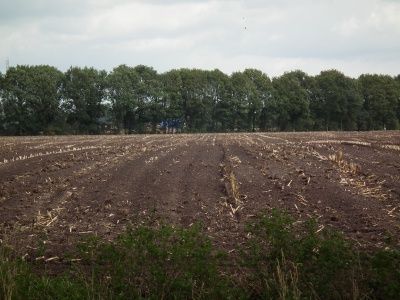Bolle Akkers, Bakel
Typical of the poor sandy soils of Brabant are the so-called convex fields. These consist of layers, sometimes up to 1.50m deep of dark brown earth, enriched via animal manure mixed with peat. Farmers applied these to the fields year after year. In this way, a good harvest could still be achieved where the soil itself would otherwise not allow it. Mixed farming was then necessary. Indeed, a convex field is also convex in shape and has virtually no planting or waters.
In prehistory (it ends in the Netherlands in the year 12 BC)…
Typical of the poor sandy soils of Brabant are the so-called convex fields. These consist of layers, sometimes up to 1.50m deep of dark brown earth, enriched via animal manure mixed with peat. Farmers applied these to the fields year after year. In this way, a good harvest could still be achieved where the soil itself would otherwise not allow it. Mixed farming was then necessary. Indeed, a convex field is also convex in shape and has virtually no planting or waters.
In prehistory (it ends in the Netherlands in the year 12 BC), enrichment of poor soils was already started. In the Middle Ages, this was perfected in the pot-holding system as it was also done in Bakel. A typical farmer had a mixed farm, so he had animals as well as growing vegetables and other crops, and he had access to peat. Now access to peat was not a problem in the Peel. The farmer's cows or sheep grazed both on the heath and on hay meadows (along streams, with richer soil and thus better grass, although a lot of hay was also hayed there for winter fodder) and the farmer put peat in the swampy Peel. That peat formed the bedding for the stables. For about six months, the stable was not fattened but peat was added when necessary. The resulting mixture of manure and peat was a good fertiliser and was spread on the field. Although these were thin layers each year, they were piled up over the long course of time. In Gemert-Bakel, layers of one-and-a-half metres of dark brown earth have been found on top of sand. The thickness of the eared layer, as the brown earth is called, in the convex fields below Bakel can vary greatly. The sloping relief of a convex field slopes down to roads and small streams where, especially on old roads and streams, the original soil is found under the earing layer. Spherical fields are a labour-intensive method of cultivating crops and, historically, few plantings have been established on them. The convex fields below Bakel are a fine example of this.
For the cattle, the potting shed system was not healthy. The animals stood on very damp ground with lots of ammonia fumes and the stables of the time, as we still see in farms today until the early twentieth century, had very poor ventilation which also meant that little oxygen could be exchanged in the stable. It did happen that the animals would come out of the barn dead tired and sweating in the morning because they had lacked oxygen during the night. In earlier times, people would attribute this to witches. They would have stolen the animals from the stables at night and made them run mercilessly fast.

